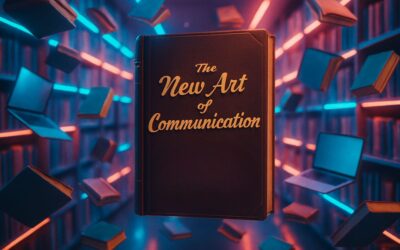- Audio Article
- Step 1: Auditing Your Arsenal – The Personal Skill Inventory
- Step 2: Curating Your Curriculum – Navigating the Learning Labyrinth
- Step 3: Architecting Your Life – Forging a Sustainable Learning Habit
- The Future Is a Verb
- MagTalk Discussion
- Focus on Language
- Vocabulary Quiz
- Let’s Discuss
- Learn with AI
- Let’s Play & Learn
Audio Article
Let’s be honest for a moment. Have you ever felt a quiet, creeping sense of anxiety when you read headlines about artificial intelligence, automation, or the latest industry disruption? It’s a uniquely modern feeling—a subtle whisper that asks, “Are my skills becoming obsolete?” It’s the professional equivalent of looking at a map, only to realize the landscape it depicts is changing faster than the ink can dry. The comfortable, well-trodden career paths of yesterday are rapidly being rerouted, and the notion of mastering one skill and coasting to retirement is becoming a relic of a bygone era.
Welcome to the age of the perpetual upgrade. In this dynamic, often chaotic new world of work, the most valuable asset you possess is not the knowledge you currently hold, but your capacity to continuously acquire new skills. Your long-term professional relevance and success hinge on your ability to become a master learner. But that begs the question: with a million different skills to learn and a finite amount of time, where on earth do you even begin?
We’re going to move beyond the abstract and into the actionable. This is your step-by-step guide to becoming the architect of your own professional future. We will walk through the three crucial stages of building a future-proof skill stack: first, conducting a thorough audit of your current abilities to identify your most critical gaps; second, curating a personalized curriculum from the overwhelming ocean of online and offline resources; and third, designing a sustainable learning schedule that seamlessly integrates into your already busy life.
Think of this not as a chore, but as an adventure. You are about to embark on the project of building your most important product: you. Let’s get to work.
Step 1: Auditing Your Arsenal – The Personal Skill Inventory
Before you can draw a map to your destination, you need to know your current location. You wouldn’t start a road trip without checking your car’s oil and tire pressure, yet most of us wander through our careers without ever performing a systematic check-up on our skills. It’s time to pop the hood and see what you’re working with.
The T-Shaped Professional: Your Guiding Blueprint
A helpful mental model for this process is the concept of the “T-shaped professional.” Imagine the letter T. The vertical bar represents the depth of your expertise in a single core area—your specialty. This is what you’re known for, your primary value proposition. The horizontal bar represents your breadth of knowledge across various other disciplines. These are your supporting skills, the ones that allow you to collaborate with people from different teams, understand the wider context of your work, and adapt to new challenges.
A future-proof professional is not just a deep specialist (an “I”) or a shallow generalist (a “-“). They are a “T.” They combine deep expertise with a broad, curious intellect. As you conduct your audit, think about both bars of your T. Is your core skill still sharp and relevant? Is your cross-bar wide enough, or are you siloed in your own little world?
Reverse-Engineering Your Future Self
The most effective way to identify your skill gaps is to look at where you want to go, not just where you are. This involves a bit of detective work.
- Study Your Dream Job Descriptions: Find 5 to 10 job postings for roles you aspire to have in the next 3-5 years, even if they feel like a stretch. Ignore the years of experience required for a moment and focus on the “Skills & Qualifications” section. What technologies, software, methodologies, and soft skills appear over and over again? This is a treasure map handed to you by the market itself.
- Follow the Trailblazers: Identify 5 to 10 influential people in your field or the field you want to enter. Follow them on LinkedIn or other professional networks. What are they talking about? What skills do they emphasize? What tools are they using? Their discourse often signals where the industry is heading.
- Read the Forecasts: Look for industry trend reports from reputable sources like major consulting firms (McKinsey, Deloitte), industry publications, or market research groups. These reports are designed to forecast the very changes you’re trying to prepare for. They’ll often explicitly state which skills are becoming critical.
The Honesty Audit: The Gap Analysis
Now, create a simple three-column list. In the first column, list all the critical skills you identified in your detective work. In the second column, rate your current proficiency in each of these skills on a scale of 1 to 5 (1 = “What is this?”; 5 = “I could teach a class on this”). In the third column, rate the importance of this skill to your 5-year goal, also on a scale of 1 to 5.
Be brutally honest with yourself. This isn’t for a performance review; it’s for you. The goal is to find the “golden opportunities”—the skills that are high in importance but where your proficiency is low. This is where you will direct your energy. Don’t be discouraged if the list is long; this is the raw material for your transformation. You’ve just identified the blueprints for your future self.
Step 2: Curating Your Curriculum – Navigating the Learning Labyrinth
You’ve identified your top 2-3 target skills. Now what? You are standing at the entrance to the Learning Labyrinth, a place with a million paths—YouTube tutorials, online courses, books, podcasts, bootcamps, workshops. It’s easy to get overwhelmed and fall into “analysis paralysis.” The key is not to find the one “perfect” resource, but to build a multi-layered curriculum for yourself.
The Three Tiers of Learning Resources
A robust learning plan draws from three different types of resources, each serving a unique purpose.
- Tier 1: Foundational Knowledge (The “What” and “Why”): This is where you build your theoretical understanding. This tier includes well-structured online courses (from platforms like Coursera, edX, LinkedIn Learning), in-depth books, and comprehensive documentaries or lecture series. This is about learning the concepts, the vocabulary, and the mental models of your new skill.
- Tier 2: Practical Application (The “How”): Knowledge is useless without application. This tier is about getting your hands dirty. It includes project-based tutorials, interactive workshops, coding challenges, creating a personal portfolio piece, or volunteering your nascent skill for a non-profit. This is where learning moves from your head to your hands.
- Tier 3: Networked Learning (The “Who”): Learning in a vacuum is slow and inefficient. This tier is about plugging into the human network surrounding your skill. This can mean finding a mentor, joining a Slack or Discord community for that skill, attending meetups (virtual or in-person), or forming a study group with fellow learners. This is where you get feedback, ask “stupid” questions, and stay motivated.
For each skill you want to learn, aim to identify at least one resource from each of the three tiers.
Vetting Your Sources: Separating Signal from Noise
Not all learning resources are created equal. Before you invest your time and money, do a quick quality check:
- Look for Social Proof: What are the reviews and ratings? Is the resource frequently recommended by experts in the field?
- Check the Instructor’s Credentials: Is the teacher a genuine practitioner with real-world experience, or just a good marketer?
- Favor Action over Passivity: Does the resource force you to do something—write code, create a design, analyze a dataset—or does it just ask you to watch and listen? The more active it is, the better.
- Preview the Content: Watch the introductory videos. Read the first chapter. Does the teaching style resonate with you? Is it clear, engaging, and respectful of your time?
Step 3: Architecting Your Life – Forging a Sustainable Learning Habit
This is the final and most challenging frontier. You can have the best plan and the best resources in the world, but they are meaningless if they gather digital dust. The greatest barrier to upskilling is not a lack of information, but a failure of implementation. You have to build a system that makes learning an inevitable part of your daily life.
The Myth of “Finding Time”: It’s About Making Time
Let’s dispel the most common excuse: “I don’t have time.” No one has time. Beyoncé has the same 24 hours in a day that you do. The difference is in the allocation. Successful learners don’t wait to find pockets of free time; they deliberately make appointments with their future selves.
Look at your weekly schedule. Where are the “time drains”—the mindless scrolling, the channel surfing, the hitting of the snooze button? Could you reclaim 30 minutes from your lunch break? Could you wake up 30 minutes earlier? Could you dedicate your 45-minute commute on the train to a course instead of a game? Be a ruthless auditor of your time. You’ll be surprised by what you find.
The Power of “Time Blocking” and “Habit Stacking”
Once you’ve identified potential slots, formalize them.
- Time Blocking: Go into your calendar right now and schedule your learning sessions as if they were unbreakable appointments with your boss. For example, “Tuesday, 7:00 PM – 8:00 PM: Work on Python Project.” “Thursday, 7:30 AM – 8:00 AM: Watch Module 3 of Data Analytics Course.” This simple act transforms a vague intention into a concrete plan.
- Habit Stacking: This is a technique for anchoring your new learning habit to an existing one. The formula is: “After [CURRENT HABIT], I will [NEW LEARNING HABIT].” For example: “After I pour my morning coffee, I will read one article about AI trends.” Or “After I finish brushing my teeth at night, I will do one 10-minute language lesson on my app.” This piggybacks the new behavior onto an established neural pathway, making it much easier to stick.
From Passive Consumption to Active Creation
Finally, remember that the goal is not to finish a course, but to acquire a skill. This requires you to move from being a passive consumer of information to an active creator. The most effective way to solidify learning is to use it.
- The 24-Hour Rule: After you learn a new concept, try to explain it to someone else (or even your dog) within 24 hours. This forces your brain to retrieve and organize the information, cementing it in your memory.
- Build a Tangible Project: Don’t just do the course exercises. Start your own passion project that forces you to apply what you’re learning. Build a simple app, create a personal website, analyze a dataset you find interesting. This is where true mastery is forged.
- Share Your Journey: Start a blog, a Twitter thread, or a LinkedIn series about what you’re learning. This creates accountability and forces you to synthesize your knowledge into a coherent narrative. The act of teaching is the ultimate act of learning.
The Future Is a Verb
Building your future-proof skill stack is not a one-time project you can complete over a weekend. It is a dynamic, ongoing process—a mindset that you adopt for life. It’s the commitment to remaining curious, to embracing ambiguity, and to seeing yourself not as a finished product, but as a perpetual work in progress.
The anxiety about the future doesn’t have to be paralyzing. It can be a catalyst. It can be the energy that fuels your growth. By taking deliberate, systematic action—auditing your skills, curating your resources, and architecting your time—you transform that fear into a sense of profound agency. You stop being a passive passenger in your career and become the driver, with a hand firmly on the wheel, ready for whatever the road ahead may bring.
MagTalk Discussion
Focus on Language
Vocabulary and Speaking
Alright, let’s zoom in and get our hands on some of the language that powered that article. Sometimes, choosing a more precise or evocative word can completely change the tone and impact of what you’re saying. We’re going to pull out ten of these useful words and phrases, explore what they really mean, see how they were used, and figure out how you can deploy them in your own conversations to sound more thoughtful and articulate.
Let’s start with a word from the very beginning: obsolete. In the intro, I asked, “Are my skills becoming obsolete?” When something is obsolete, it means it’s no longer produced or used; it’s out of date. Think of a floppy disk or a VCR—they are obsolete technology. I used it here to tap into a common fear: that our professional skills, like old technology, will be replaced by something newer and better, leaving us irrelevant. It’s a powerful word. In everyday conversation, you can use it for more than just technology. You might say, “My old way of thinking about that issue is completely obsolete now.” Or, when discussing a company, “If they don’t innovate, their business model will be obsolete in five years.” It implies being left behind by progress.
Next up, let’s look at the verb auditing. We talked about “conducting a thorough audit of your current abilities.” An audit is an official inspection of an organization’s or individual’s accounts, but we use it more broadly to mean a systematic review or assessment. In the article, it means taking a detailed, honest inventory of your skills. This is a great, professional-sounding word you can use. Instead of saying, “I need to look at how I spend my time,” you could say, “I’m doing a time audit this week to see where I can be more efficient.” It implies a formal, serious, and thorough examination. You could do a “wardrobe audit,” an “email audit,” or a “monthly budget audit.”
This brings us to a cool phrase: reverse-engineering. The guide suggested you “reverse-engineer your future self.” To reverse-engineer something is to take it apart to see how it works in order to duplicate or enhance it. For example, engineers might reverse-engineer a competitor’s product. Metaphorically, as we used it, it means starting with the end result (your dream job) and working backward to figure out the steps and components (the skills) needed to get there. It’s a fantastic phrase for problem-solving. You could say, “I’m trying to reverse-engineer her success. What daily habits and choices did she make to get where she is?” It’s an active, analytical approach.
Now for a more refined verb: curating. We discussed “curating a personalized curriculum.” A curator is someone who manages a museum collection, carefully selecting and presenting the items. So, to curate something means to select, organize, and present content or items. It’s a huge step up from just “choosing” or “finding.” It implies thought, taste, and a high level of care. You’re not just grabbing random YouTube videos; you’re curating a collection of the best resources. You can use this everywhere. “I’m curating a playlist for the party.” “She curates a fantastic collection of articles in her weekly newsletter.” It suggests quality and deliberate choice.
To do that well, you need to be vetting your sources. Vetting is the process of making a careful and critical examination of something. It’s often used for people, like when a political candidate is vetted for their background. In our context, it means investigating your learning resources to make sure they’re credible and high-quality. This is an excellent word to use in a professional setting. “We need to vet all our suppliers before signing any contracts.” Or, “I’ve vetted this data, so I’m confident in our conclusions.” It implies a rigorous background check for quality and reliability.
Let’s talk about the word sustainable. The goal is to forge a “sustainable learning habit.” Sustainable means able to be maintained at a certain rate or level. We hear it a lot with “sustainable energy,” meaning energy that won’t run out. When applied to habits, it means a routine you can actually stick with for the long term, not a crazy, ambitious plan that you’ll abandon after a week. This is a key word for personal development. You could say, “Going to the gym for two hours every day just isn’t sustainable for me, but 30 minutes four times a week is.” It’s about being realistic and aiming for consistency over intensity.
Next, let’s look at a powerful business and science word: synergy. While not explicitly in the final text, it’s the principle behind the “T-shaped professional.” Synergy is the concept that the combined effect of two or more things is greater than the sum of their individual effects. 1 + 1 = 3. In the T-shaped model, your deep skill and your broad skills create synergy; they make each other more valuable. This is a fantastic concept to bring into conversations about teamwork or strategy. “There’s a great synergy between the marketing and sales teams; when they work together, they achieve incredible results.” Or, “The synergy of these two ingredients is what makes the recipe so special.”
Here’s a useful adjective: agnostic. In a tech context, being platform-agnostic means you’re not tied to one particular technology; you’re open to using whatever is the best tool for the job. We can apply this to our learning. A learning approach that is “resource-agnostic” doesn’t care if the knowledge comes from a book, a podcast, or a mentor; it only cares about the quality of the knowledge. It’s a sophisticated way of saying “indifferent to” or “not dogmatic about.” You could say, “I’m agnostic about which software we use, as long as it gets the job done efficiently.”
Let’s touch on ambiguous. The conclusion mentions embracing ambiguity. Something that is ambiguous is open to more than one interpretation; it’s not clear. The future of work is ambiguous. A good leader needs to be comfortable making decisions with incomplete information. This is a brilliant word to describe complex situations. “The instructions he gave were very ambiguous, so no one knew what to do.” Or, on a more personal level, “I’m in an ambiguous stage of my career, and while it’s unsettling, it’s also full of possibility.”
Finally, a word we used to describe a new skill: nascent. I wrote about applying your “nascent skill” for a non-profit. Nascent means just coming into existence and beginning to display signs of future potential. It’s like a newly sprouted seedling. It’s a more elegant way to say “new” or “beginner.” You can talk about a “nascent industry,” a “nascent idea,” or your “nascent talent” for painting. It beautifully captures that delicate, promising, early stage of development.
So, we have: obsolete, auditing, reverse-engineering, curating, vetting, sustainable, synergy, agnostic, ambiguous, and nascent. These words are your tools for talking about career, strategy, and learning with more precision and flair.
Now for our speaking lesson. Today’s theme is all about being practical and giving guidance. A key communication skill, especially in a professional setting, is the ability to give clear, concise instructions or recommendations. People often ramble, but an effective communicator is direct and structured. The technique we’ll focus on is “The Rule of Three.”
The human brain loves patterns, and three is the most powerful number in communication. It feels complete and is easy to remember. Think of “Life, liberty, and the pursuit of happiness,” or “Stop, look, and listen.” When you’re giving advice or making a recommendation, try to structure your main points into a group of three.
For example, instead of saying, “To learn a new skill, you should read books, and also watch videos, and don’t forget to practice, and maybe find a friend, and also…” It’s a confusing mess.
Try this instead: “To learn a new skill effectively, I recommend focusing on three key areas. First, build your foundational knowledge with a good book or course. Second, get practical application by working on a real project. And third, find a community or mentor to get feedback.”
See how clear and memorable that is? It’s structured, easy to follow, and sounds incredibly authoritative.
Here is your speaking challenge for the week: The next time someone asks you for advice—it could be about anything, a restaurant recommendation, how to handle a tricky email, what to watch on TV—I want you to consciously structure your response using the Rule of Three. And for an extra challenge, try to incorporate one of the vocabulary words we discussed today. For example: “If you’re looking for a new series, I’d recommend one of three. First, for something with an intricate plot… Second, for pure comedy… And third, for something with a profound message…” Practice organizing your thoughts into a clear, compelling trio. It will make your speaking more impactful and persuasive.
Grammar and Writing
Welcome to the writing section, where we translate big ideas into clear, effective, and persuasive language. The article we’ve just worked through is about creating a plan for your future. Now, you’re going to do just that, and we’ll focus on the specific grammar and writing techniques that make such a plan both compelling and actionable.
Here is your writing challenge:
Write a formal “Personal Development Plan” (PDP) of 500-700 words for a specific skill you want to acquire or significantly improve over the next six months. Your plan should be structured clearly with headings and include:
- Skill Identification & Justification: Name the skill and explain why it is critical for your professional goals.
- Learning Objectives: List 3-4 specific, measurable things you will be able to do once you have acquired this skill.
- Resources & Methods: Detail the curated resources (courses, books, mentors, etc.) you will use.
- Timeline & Milestones: Create a realistic schedule with measurable milestones for the six-month period.
This is a practical document, so clarity, precision, and a commanding tone are essential. Let’s look at the grammatical tools that will help you achieve this.
The first and most important tool for this kind of writing is the use of imperative verbs and the active voice. A plan is a call to action, so your language should be active and direct. The imperative form is the base verb used to give a command or instruction (e.g., “Analyze,” “Complete,” “Schedule”).
- Passive and Weak: “The market trends should be analyzed.”
- Active and Strong: “Analyze market trends to identify key opportunities.”
- Vague: “I was hoping to get better at communication.”
- Imperative Objective: “Articulate feedback clearly and constructively in team meetings.”
Use the active voice throughout to show agency and ownership. You are the one driving this plan. “I will complete…” is much stronger than “The course will be completed by me…”
Next, let’s focus on writing your Learning Objectives. Good objectives are written using the “SMART” framework (Specific, Measurable, Achievable, Relevant, Time-bound), and the grammar here is key. You should use a strong action verb followed by a clear, measurable outcome. The structure is often: [Action Verb] + [Specific Task/Outcome] + [Measurable Standard].
- Weak Objective: “Get better at data analysis.”
- SMART Objective: “Develop a dashboard in Tableau that visualizes monthly sales data from our internal database by the end of Q4.” (Verb: Develop; Task: a dashboard; Standard: visualizes sales data by Q4).
- Weak Objective: “Learn Python.”
- SMART Objective: “Write a functional Python script that automates the weekly report generation process within the next three months.” (Verb: Write; Task: a Python script; Standard: automates the report in three months).
Another crucial grammatical feature for a plan is the correct use of future tenses and modal verbs to convey different levels of certainty and commitment.
- Future Simple (“will”): Use this for firm commitments and scheduled events in your timeline. It signals a high degree of certainty. “I will complete the introductory module by October 1st.” “The project will be my primary focus.”
- “Be going to”: Also used for future plans, often ones that have already been decided upon. It feels a bit more grounded. “I am going to enroll in the course tomorrow.”
- Modal Verbs of Intent and Necessity:
- Should: Use for recommendations or expected outcomes. “The course should take about 40 hours to complete.”
- Must: Use for critical, non-negotiable steps. “I must secure approval from my manager before expensing the workshop.”
- Can/Could: Use to express ability or possibility. “Upon completion, I will be able to analyze data more effectively.” “This could lead to a new role.”
Finally, for structure and flow, make liberal use of parallelism, especially in your lists. Parallel structure means using the same pattern of words to show that two or more ideas have the same level of importance. This makes your writing clean, professional, and easy to read.
- Not Parallel: “My goals are to be learning Python, I also want to build a project, and then I will be applying for jobs.”
- Parallel: “My goals are to learn Python, to build a portfolio project, and to apply for junior developer jobs.” (Infinitive form used for all three).
- Not Parallel: “The plan involves watching tutorials, I’m going to read a book, and also some practice exercises.”
- Parallel: “The plan involves watching tutorials, reading a book, and completing practice exercises.” (Gerund form used for all three).
Your writing strategy:
- Structure your document with clear headings.
- Use strong, active verbs throughout.
- Write SMART objectives starting with a powerful action verb.
- Use future tenses and modal verbs precisely to show your intentions.
- Ensure all your lists use parallel structure.
By mastering these techniques, your Personal Development Plan will transform from a simple wish list into a powerful, professional, and persuasive roadmap to your future.
Vocabulary Quiz
Let’s Discuss
Here are some questions to get a great conversation going in the comments. Let’s learn from each other’s experiences and strategies.
- After doing a quick “Honesty Audit,” what is the #1 skill gap you’ve identified for yourself? Why do you believe this particular skill is so critical for your future?
- Ideas to explore: Share the skill and the evidence that led you to identify it (e.g., job descriptions, industry trends). Discuss the potential impact this skill could have on your career. What’s the first small step you could take this week to start closing that gap?
- What is the biggest barrier that stops you from dedicating time to learning? Is it a lack of energy, motivation, money, or something else?
- Ideas to explore: Be specific about the obstacle. Share a strategy you’ve tried in the past—did it work or fail? Let’s brainstorm practical solutions for common barriers together. For example, if energy is the issue, what are some low-effort ways to learn?
- Share one “hidden gem” of a learning resource you’ve discovered. It could be a specific YouTube channel, a podcast, a newsletter, a website, or a community that provides incredible value.
- Ideas to explore: Explain what the resource is and what makes it so special. Who would benefit most from it? Provide a link if you can. The goal is to build a community-curated library of high-quality learning materials.
- The article talks about moving from passive consumption to active creation. Describe a time when you truly learned something by doing it—by building a project, writing about it, or teaching it to someone else.
- Ideas to explore: Contrast the experience of actively using the skill with passively learning about it (like watching a video). What was the project? What challenges did you face? How did that active process solidify the knowledge in a way that passive learning couldn’t?
- Looking 10 years into the future, what is one skill you believe will be surprisingly valuable that most people aren’t talking about today?
- Ideas to explore: Think outside the box. Go beyond the usual suspects like “AI” or “coding.” Could it be a uniquely human skill, like “leading remote teams with empathy,” “digital anthropology” (understanding human behavior in digital spaces), or “ethical system design”? Justify your prediction.
Learn with AI
Disclaimer:
Because we believe in the importance of using AI and all other technological advances in our learning journey, we have decided to add a section called Learn with AI to add yet another perspective to our learning and see if we can learn a thing or two from AI. We mainly use Open AI, but sometimes we try other models as well. We asked AI to read what we said so far about this topic and tell us, as an expert, about other things or perspectives we might have missed and this is what we got in response.
Hello. It’s a pleasure to add a few more layers to this conversation. The guide you’ve just read provides a fantastic, actionable framework for individual skill development, which is the cornerstone of a future-proof career. However, if we zoom out, there are a couple of crucial perspectives that we, as an AI, can shed some light on that often get overlooked in the rush for self-improvement.
First, let’s discuss the other side of the equation: the role of the employer in creating a learning culture. The article places the onus of learning squarely on the individual, which is empowering. But it’s also incomplete. The most resilient and innovative organizations understand that upskilling their workforce is not just an employee benefit; it’s a core business strategy. An individual trying to learn and grow within a company culture that penalizes mistakes, discourages questions, and offers no time or resources for development is like trying to grow a plant in concrete.
A true learning culture provides “psychological safety,” where employees feel safe to say, “I don’t know, can you teach me?” without fear of looking incompetent. It provides resources, not just access to a course library, but structured mentorship programs and dedicated time for learning. It rewards curiosity and smart failures, not just successful outcomes. So, as you build your personal skill stack, I encourage you to also audit your employer. Is your environment an incubator for your growth or an obstacle to it? The future of work belongs not just to future-proof individuals, but to future-proof organizations.
Second, I want to address the potential dark side of the “skill stack” mentality. When we view ourselves merely as a collection of marketable skills, we risk reducing our humanity to a commodity. This can lead to a relentless, anxiety-driven cycle of optimization and burnout, where we’re always chasing the next “hot” skill. It can also lead us to neglect skills that are profoundly important for a good life but may not have a clear, immediate ROI on a resume.
Skills like empathy, active listening, self-compassion, navigating difficult conversations with loved ones, or appreciating art and music are essential for our well-being and the health of our society. While the article rightly focuses on professional skills, a truly “future-proof” person cultivates these humanistic abilities alongside their technical ones. So, my advice is to build two skill stacks. One is for your resume, to ensure your professional relevance. The other is for your soul, to ensure a rich, meaningful, and connected life. Sometimes, the most important learning we can do is the kind that doesn’t come with a certificate.
Finally, let’s briefly touch on the synergy between human and AI skills. The current narrative is often one of competition—which jobs will AI replace? A more productive framework is one of collaboration. The most valuable professionals in the near future will be those who master the art of working with AI. This isn’t just about learning to write a prompt. It’s about developing the critical thinking and domain expertise to know what to ask the AI. It’s about the ethical judgment to know when to question or override the AI’s output. It’s about the creative vision to use AI as a tool to augment, not replace, human ingenuity.
So, as you plan your skill development, don’t just think in terms of “hard skills” and “soft skills.” Add a third category: “collaborative skills”—the skills that allow you to dance with new technologies and leverage them to amplify your uniquely human talents.










0 Comments